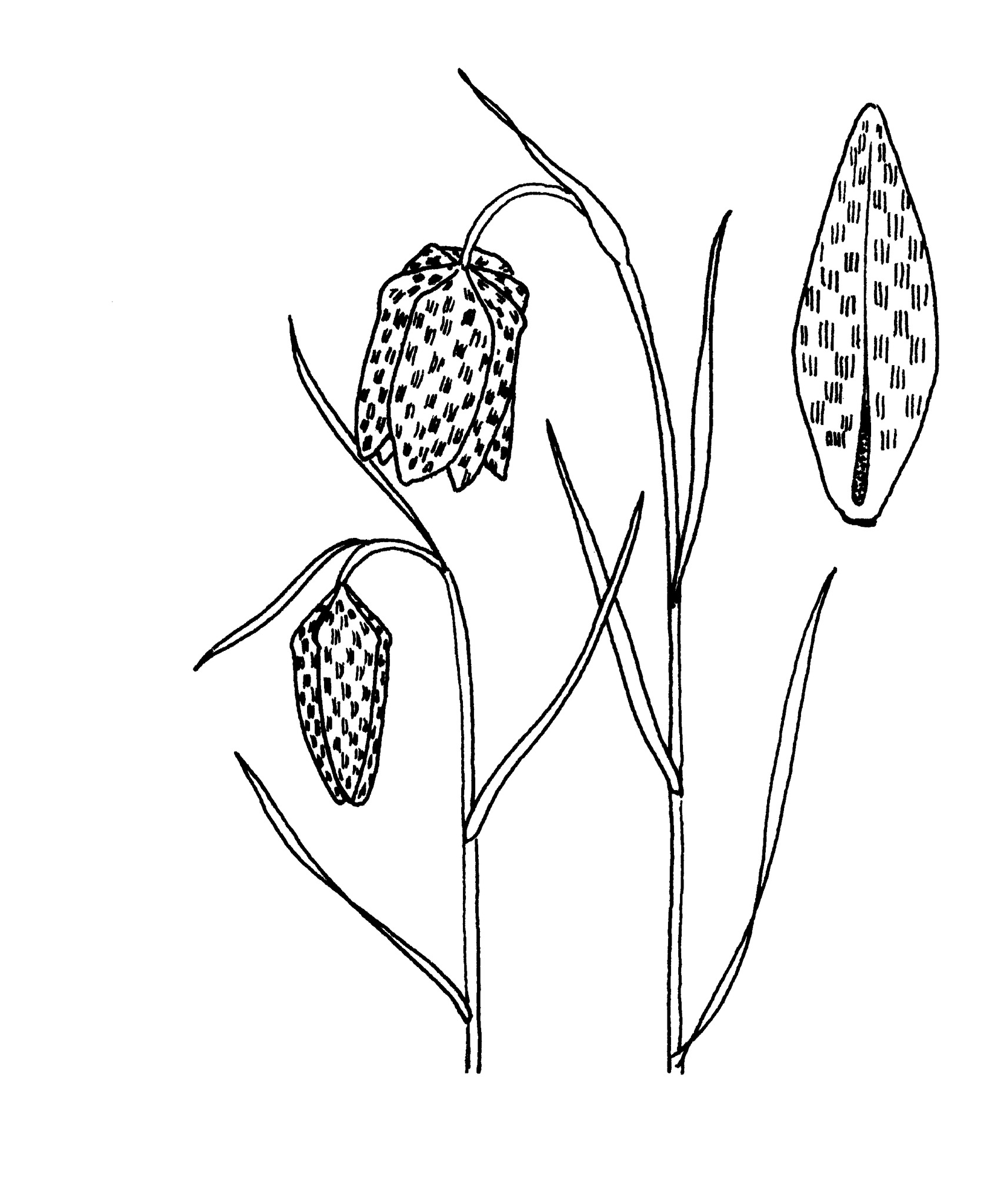
Latin fritillis – a dice box or chequer board, referring to the patterning on the tepals of some species.
Perennial herbs from a usually tunicate bulb. Leaves several, cauline, linear to lance-shaped, not sheathing. Flowers radially symmetrical, bell-shaped to tubular, stalked, nodding. Inflorescence a 1 to many flowered raceme, bracts leafy. Tepals 3+3, free, inner 3 broader, nectaries obvious. Stamens 6, free; anthers not usually versatile. Ovary superior, ovoid. Fruit a 6-angled or winged capsule. Seeds brown, flat, winged.
Grown for the spectacular flowers but mostly only in cool climate gardens on well-drained rich soil.
A collectors' genus.
About 130 species from temperate Europe, Asia and western N America.
Cauline leaves with leafy bracts; nodding bell-shaped flowers and, usually, non-versatileanthers.
Pratt & Jefferson-Brown (1997).
Source: (2005). Liliaceae. In: . Horticultural Flora of South-eastern Australia. Volume 5. Flowering plants. Monocotyledons. The identification of garden and cultivated plants. University of New South Wales Press.
